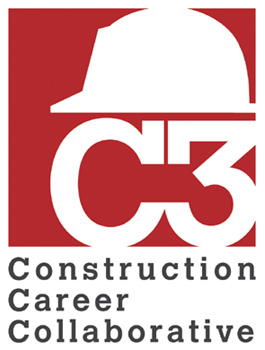 The following article was authored by Chuck Gremillion, Executive Director of Construction Career Collaborative.
The following article was authored by Chuck Gremillion, Executive Director of Construction Career Collaborative.
Back in January, the Construction Career Collaborative (C3) hosted a meeting with members of its board of directors and other interested parties to establish new strategic goals. One of the primary themes that emerged was the importance of identifying and collecting metric data that validates the business case of C3.
Since that meeting, C3 has formed a metrics committee that includes committee chair, John Barnes of Rogers-O’Brien Construction, Art Canales of Chamberlin Roofing & Waterproofing, Pete Dawson who recently retired from Texas Children’s Hospital, Craig Peterson of Peterson Beckner Industries, Bud Walters of Pieper-Houston Electric, and me to tackle this critical issue.
This committee met for the first time on April 17th with the initial goal of identifying metrics that are as broadly applicable as possible. The committee recognized that metrics collection is a complex topic that is affected by many variables, which can make the goal of broad application a challenge. Committee members focused on the identification of both “project-specific metrics” and “employer-specific metrics.” We also recognized that it would be a mistake to try to “boil the ocean” so we agreed that it is important to start simple, have success and build upon that success.
Please keep in mind that the committee has met only once with future meetings still to come, but these are some of the possibilities that it identified, several of which are like an onion and may have many layers of complexity.
Project-Specific Metrics
- Project schedule – possibly influenced by many factors
- Punch list – like schedule, the downside is that many factors influence a punch list, especially on complex projects.
- Adherence to budget
- Safety – Total Recordable Incident Rate (TRIR)
- Commissioning data – possibly a good way to measure mechanical, electrical and plumbing systems installations
- Cost of/instances of re-work
- Cost of ownership/operating costs – a long-term measurement of quality
- Third-party inspections of the building structure
- Ratio of apprentices to journeymen – may vary by trade
- Owner Controlled Insurance Programs/Contractor Controlled Insurance Programs where applicable
Employer-Specific Metrics
- Impact of craft training on performance – productivity, employee adherence to schedule, punch list detail
- Safety – TRIR and/or workers’ compensation insurance modifier
- Cost of rework/instances of rework
- Employer retention rate or employer turnover rate possibly tied to an employer’s Texas Employment Commission modifier
- Ratio of apprentices to journeymen
- Ratio of budgeted man hours to actual man hours worked by project
One important item of note, similar to building a skilled and sustainable craft workforce, the story told by the collection of metrics data is like writing a book that never ends. It takes time, and it tells an ongoing story that is perpetual if continuously updated. Metrics measure performance, thereby providing feedback to those in control of the process, which enables them to make adjustments in order to continuously improve.
Similarly, we believe that metrics will establish the business case that will prove the value of C3 to all involved with it, but we must first correctly identify the proper data to collect, establish the collection process, collect the data, interpret the results and then communicate the findings.
The C3 Metrics Committee welcomes your input. If your company is tracking metrics that have proven to be valuable measurements of performance, and you would like to share them, please contact me either by email at [email protected] or by phone at 713.999.1218. Please note that we are not asking you to share confidential information that is proprietary to your organization. We are interested only in the topic and method of collection.
C3.is.how.

